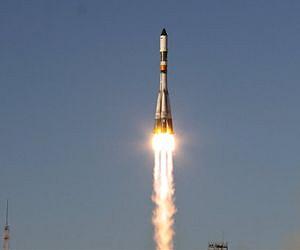Russia declares 'era of Soyuz' after shuttle
by Staff Writers
Moscow (AFP) July 21, 2011
Moscow on Thursday declared it was now "the era of the Soyuz" after the US shuttle's last flight left the Russian system as the sole means for delivering astronauts to the International Space Station.
Far less glamorous than the horizontal-landing winged shuttle, the principle of Russia's Soyuz rocket and capsule system for sending humans into space has changed little since Yuri Gagarin became the first man in orbit in 1961.
But after the successful landing of the US Space Shuttle Atlantis Thursday drew the curtain on the 30-year US space shuttle programme, it is now the only vehicle which can propel astronauts towards the ISS.
"From today, the era of the Soyuz has started in manned space flight, the era of reliability," the Russian space agency Roskosmos said in a statement.
Roskosmos expressed its admiration for the shuttle programme, which it said had delivered payloads to space indispensable for construction of the ISS.
"Mankind acknowledges the role of American space ships in exploring the cosmos," it added.
But Roskosmos also used the occasion to tout the virtues of the Soyuz (Union) spacecraft, which unlike the shuttle lands on Earth vertically with the aid of parachutes after leaving orbit.
It said that there was a simple answer to why the Soyuz was still flying after the shuttles retired -- "reliability and not to mention cost efficiency."
It lashed out at what it said were foreign media descriptions of the Soyuz as old spaceships, saying the design was constantly being modernized.
Russia has this year started using the modernized TMA-M version of the Soyuz, which is lighter and uses a digital rather than analogue computer.
Like NASA, Russia is also looking at a new generation spacecraft but Roskosmos said much time was still needed to prove the craft had the same level of safety as the Soyuz.
It said that astronauts from NASA and other space agencies will now be relying on the Soyuz for human spaceflight until 2016 at the earliest.
The shuttle programme was shadowed by two disasters -- Columbia exploded in 2003 and Challenger was destroyed in 1986 in accidents that killed a total of 14 crew members.
Soyuz has also seen two fatal accidents but both several decades ago under the USSR.
The Soyuz-1 mission in 1967 carrying cosmonaut Vladimir Komarov ended in disaster when the craft crashed to Earth while the three cosmonauts on Soyuz-11 were killed in 1971 when their capsule depressurised in space.
1961 technology. Perhaps we can "liberate" our old capsules from museums and use them for 20 or so years until the Obama program allows a trip to a rock in space.
DANCING NEBULA

When the gods dance...
Sunday, July 24, 2011
Russia declares 'era of Soyuz' after shuttle
Subscribe to:
Post Comments (Atom)

No comments:
Post a Comment